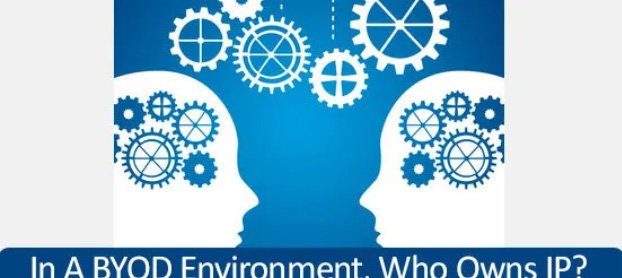Only 24 percent of businesses currently report plans to implement a ‘Bring Your Own Device’ policy in their workplace, according to a survey conducted earlier this year by CompTIA. Nevertheless, BYOD is considered a tech movement of the future as professionals wield multiple devices to get their work done. Businesses are starting to realize the advantages of implementing a BYOD policy, but the slow enactment of this setup may be because it creates a number of intellectual property questions relating to content created on these devices. As a result, businesses need to understand the ins and outs of intellectual property rules and how they should address this subject in their respective BYOD policies.
Copyrighted Software Creates a Default Ownership
The primary complication of IP rights within BYOD setups is that content and activity is being conducted on a personal device. Workers typically appreciate the flexibility of using their own personal tablet or smartphone in the workplace, but because the device is privately owned, it’s not as easy for businesses to establish governance.
However, this doesn’t mean device ownership determines IP rights. In reality, it’s usually the software ownership that establishes a default right to intellectual property. For example, suppose a worker brings in their own Android-running tablet device, and uses that device to create a PowerPoint presentation. The default ownership of that intellectual property is determined by the entity that owns the copyright to the Microsoft Office software being used. If companies require workers to install and use software to which the company owns the copyright, all content created through that platform could be owned, by default, by the company, according to FierceMobileIT.
Employment Status Often Determines Rights
While software copyright covers some use cases, there are some exceptions, the main one being employment status. When a worker is a contracted employee, instead of a full-time member of a company’s staff, they retain the rights to all content they have created. Contracted workers sell their completed work to a company, and since there’s no established ownership of the work going into a product, they retain intellectual property rights until a company purchases their content unless stated otherwise in their contract.
Use a Written Policy to Establish Expectations
Work-related content is relatively easy to address in BYOD policies, but personal and mixed-use content on devices is a different matter. Texting, built-in cameras and social media apps can all open up the risk of leaking intellectual property out to the public. Some of these activities may seem benign, but they present a huge risk to companies in the event of compromised IP. As PeakIPSolutions notes, these policies are most effective when they’re developed and implemented ahead of the technology itself, thus creating a smoother transition to innovative practices.
The best way to address this is to have IT professionals draft a comprehensive, detailed policy governing BYOD usage, including device usage expectations, restrictions on personal activity in the work place and so forth. Companies may also require segmentation of BYOD devices, with device owners creating separate profiles for business and personal use. If possible, this is the easiest way to govern usage while protecting data and other sensitive information from being improperly accessed or dispersed. Companies may also want to designate specific devices for employees under a widely-used provider that offers a variety of business-friendly devices for employees to choose from, such as Tmobile. A number of solutions, including supporting BYOD business tools, can enable businesses to set up and regulate this segmentation while improving security throughout the device. Plenty of BYOD software solutions aim to protect a company’s integrity while bringing new devices into the workplace, so it’s smart to check out these different options and choose a product that suits your specific needs.
Kevin Norvell,
Web Project Manager

